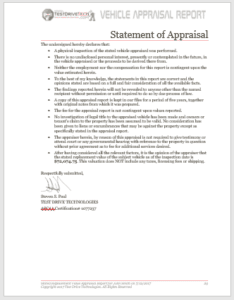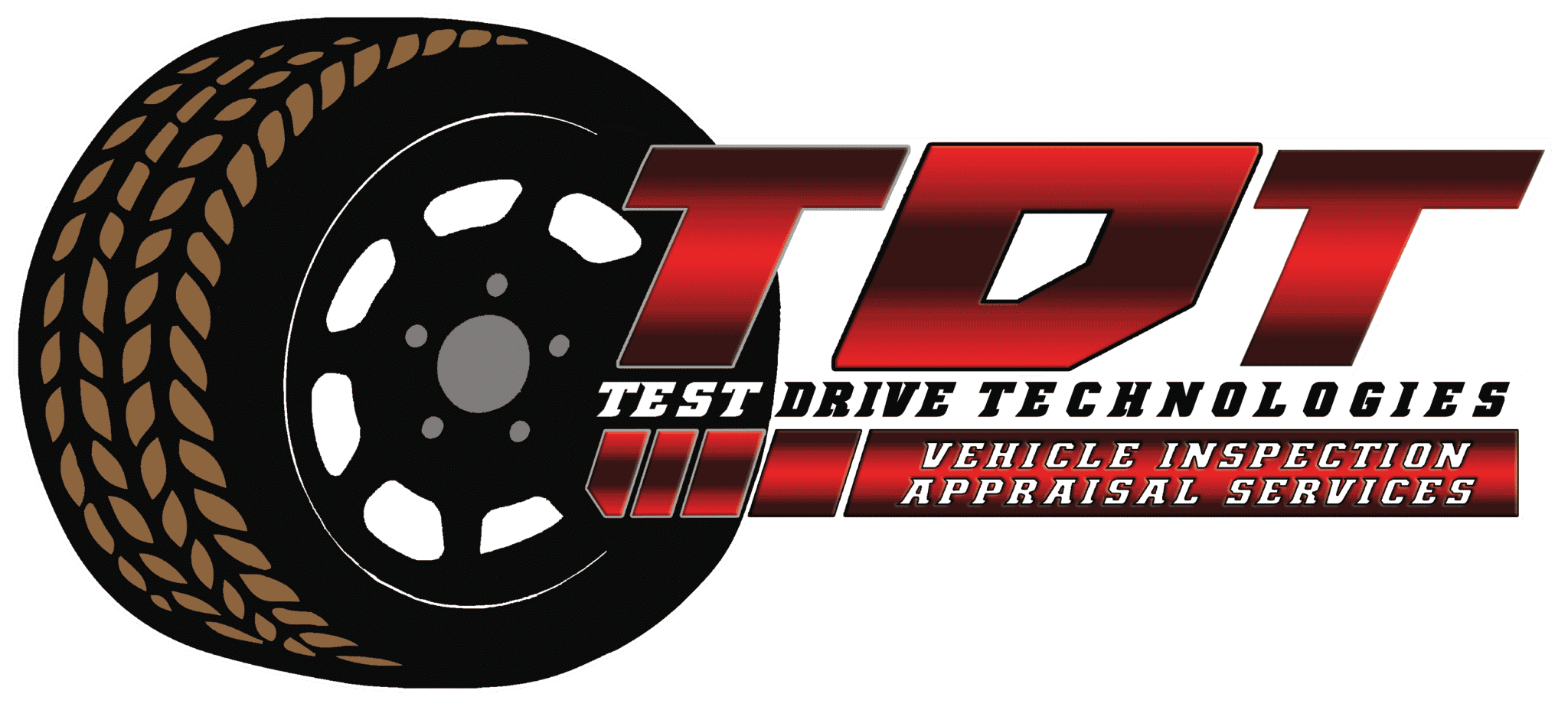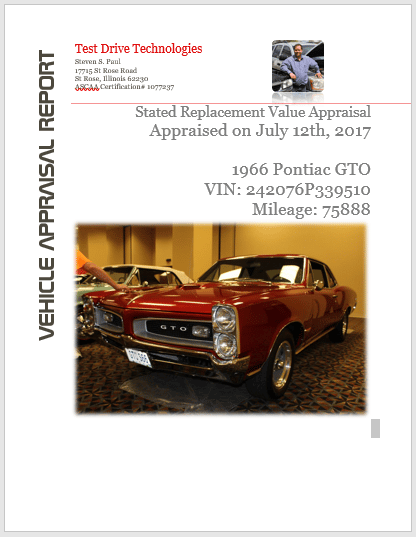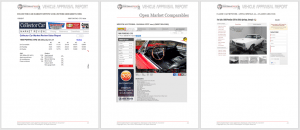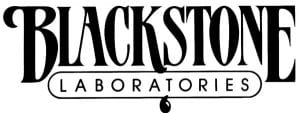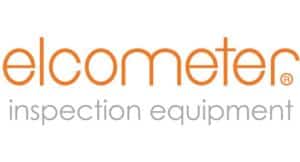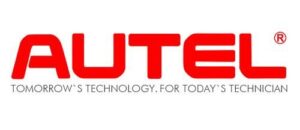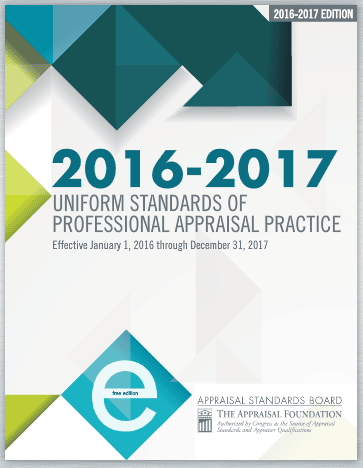
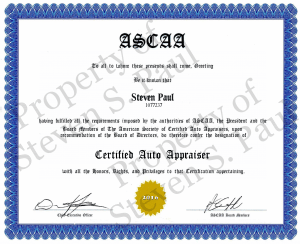
Background, Experience, and Qualification of Collector Car Appraiser – Much like hiring an attorney or accountant you will want to call and speak with them. Be sure to ask questions about their experience level, what is their specialty, are they certified and by whom and what associations do they belong to. Find out what types of vehicles they currently own or have owned in the past, do they belong to any car clubs or organizations which they regularly see and view vehicles outside of appraising vehicles. Another good way to decide on a good appraiser is if they have ever been judges of car shows or car club conferences? Believe it or not, you do not always need or require an appraiser with 40 years of experience. Although these appraisers will likely do a very good job, get you the results you are needing, they will also likely come at a high cost. Some younger or less experienced appraisers often have 15-20 years of experience in inspections and appraising vehicles. They often can be less costly, provide the same results and have a bit easier or more convenient way of delivering your appraisal results. Some more experienced or older appraisers still put all the reports, photos and video on a CD or DVD and snail mail the results to their clients, this cost additional time and money on a vehicle that you might not even want to purchase. Lastly, when choosing a vehicle appraiser, be sure to that they will be following the USPAP and guidelines provided by The Appraisal Foundation, that way if you ever must use your appraisal for legal concerns it will hold up in court or arbitration. ORDER ONE OF OUR APPRAISALS HERE!
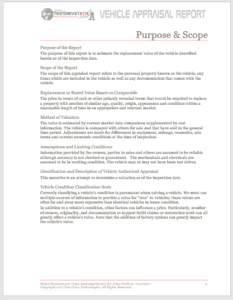
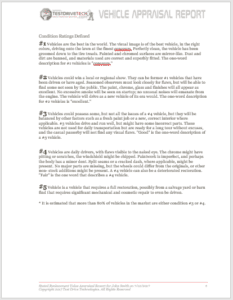
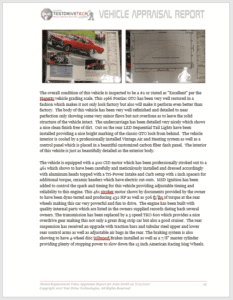
Finding Comparable Vehicles for Sale – One of the beauties of the many different appraisers out there is each can use their own style and sources of information. Appraisals are not required to provide any specific source of information but many appraisers provide information from both market value sources and comparable sales. For market data, many appraisers use NADA, Hagerty, Collector Car Market Review, Collector Car Price Guides as well as Kelly Blue Book, there are many other market data sources available especially with today’s available websites. ORDER ONE OF OUR APPRAISALS HERE!
However, comparable sales listings and past sales can be tricky at times with hard to location or limited number production vehicles. There are many available resources for comparable listings. It is important to understand that a fair market value should include all different types of sources including listings of vehicles which have sold not just offered for sale. Many of the sources for sold vehicles come from auctions such as Mecum and Barrett Jackson as well as eBay. Comparable listings for vehicles offered for sale which has not sold often show a common trend in asking prices, sources for asking prices often come from AutoTrader, Hemmings, OldCarOnline and even local dealership listings. The most important part you hope to see in an appraisal is a good variety of sources of information showing vehicles of the closest match in age, model, optional packages, and condition. ORDER ONE OF OUR COLLECTOR CAR APPRAISALS HERE!
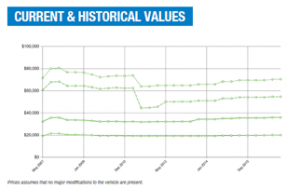
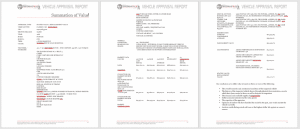
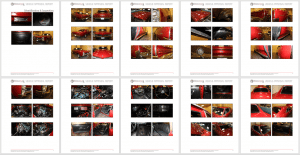
Writing of Collector Car Appraisal Report – A the beginning of this article I mentioned that no two appraisers are alike and that there is no real government oversight or regulation on automobile appraisers. Because of this, no two appraisals will ever be the same. All appraisers create and write their own appraisal reports. Some follow the strict guidelines of the USPAP developed and written by The Appraisal Foundation and adopted by the U. S. Congress. Some appraisers write their reports using a template design which has sections and breakdowns which are easy to follow however others use a long narrative telling a long story of the vehicle and how the value was established. There is no right or wrong way to write an appraisal report just so it contains all the required USPAP sections, explanations, and disclosures. Some appraisers include photos inside their report with captions others provide them separately on disc or other electronic means. There are even some appraisers which still print photos and snail mail them to their clients. ORDER ONE OF OUR APPRAISALS HERE!
